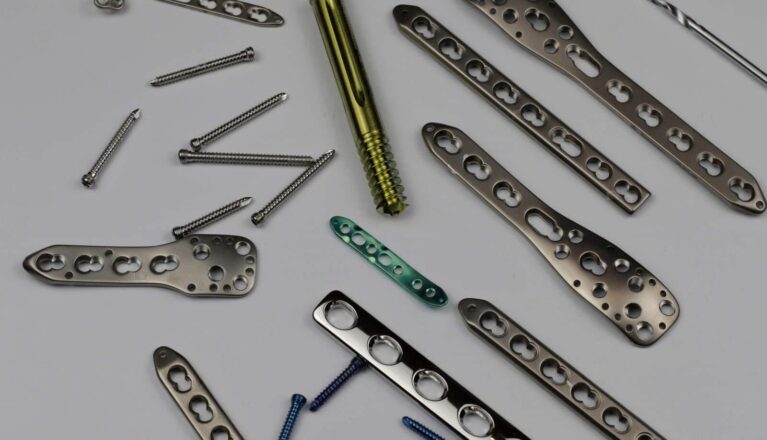Orthopedic implants are crucial in the field of orthopedic surgery, serving to replace or support damaged or diseased bones and joints. The choice of implant material is critical, as it directly affects factors such as biocompatibility, mechanical properties, and long-term performance.
Here’s a comprehensive breakdown of different orthopedic implant materials:
STAINLESS STEEL:
Composition: Primarily composed of iron, chromium, nickel, and molybdenum.
Properties: Offers high strength, good corrosion resistance, and durability.
Applications: Commonly used in orthopedic implants like locking plates, screws, and nails.
TITANIUM:
Composition: Pure titanium or titanium alloys (e.g., Ti-6Al-4V).
Properties: High strength-to-weight ratio, excellent corrosion resistance, and biocompatibility.
Applications: Used in various orthopedic implants including joint replacements, plates, screws, and dental implants.
COBALT-CHROMIUM ALLOYS:
Composition: Mainly cobalt and chromium with additions of other elements like molybdenum.
Properties: Exceptional strength, wear resistance, and biocompatibility.
Applications: Widely employed in joint replacements, particularly in hip and knee prostheses.
POLYETHYLENE:
Composition: Thermoplastic polymer.
Properties: Good wear resistance, low friction, and biocompatibility.
Applications: Commonly used as the bearing surface in joint replacements, especially in hip and knee implants.
CERAMICS (E.G., ALUMINA, ZIRCONIA):
Composition: Inorganic, non-metallic materials.
Properties: High hardness, excellent wear resistance, and biocompatibility.
Applications: Used in bearing surfaces of joint replacements, particularly in hip implants.
CARBON FIBER-REINFORCED POLYMERS:
Composition: Polymer matrix reinforced with carbon fibers.
Properties: High strength, stiffness, and fatigue resistance.
Applications: Utilized in orthopedic implants such as spinal cages and bone plates.
BIODEGRADABLE POLYMERS:
Composition: Polymers that degrade over time within the body.
Properties: Tailored degradation rates, biocompatibility.
Applications: Used in temporary implants like screws and pins for fracture fixation, gradually replaced by natural bone as they degrade.
MAGNESIUM ALLOYS:
Composition: Mostly magnesium with additions of other elements like aluminum and zinc.
Properties: Lightweight, biocompatible, and bioresorbable.
Applications: Still under research, potential for temporary implants where gradual degradation is desired.
Choosing the right material depends on various factors including the specific application, patient’s needs, and surgeon’s preference. Advances in materials science continue to drive innovation in orthopedic implants, aiming to improve patient outcomes and enhance implant longevity.



Leave A Comment